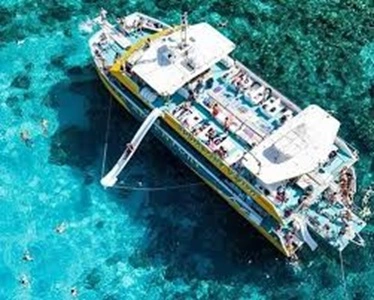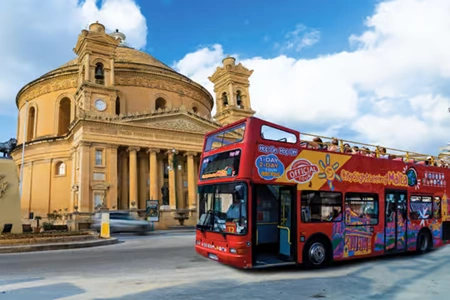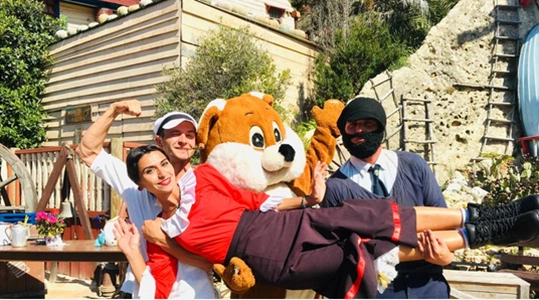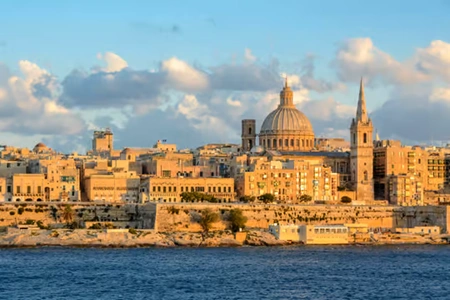Senglea
Senglea means in Maltese: L-Isla and the municipality is also called L-Isla. It is also known as Città Invicta or Civitas Invicta. Isla is derived from the Italian word for island. The city was also known as Piccola Venezia, due to the homes along the coast.
App info: In our app you will find the location, address, opening hours and admission / entrance fee of this spot. If you use the app, you will find additional information and news about this spot on this page.
The first building that was realized on this headland was in 1311 and involved a chapel dedicated to St Julian.
During the early period of the Order of St John, this headland was used as a hunting ground for the Knights and was known as L'Isola di San Giuliano.
In May 1552, the foundation stone was laid for the construction of Fort St. Michael, designed by architect Pedro Pardo, and the Fort was completed in 1553. The city was named Isola di San Michele.
The city was then walled, completed in 1563 and Grandmaster Claude De La Sengle gave the area its official status as a city and was named after him.
Senglea is built in a grid pattern adapted to the headland and is the first city in Malta that was designed after the Roman Empire.
Given the maritime revival that had taken place at the arrival of the Order of St. John, this area also grew with it.
During the Siege of Malta in 1565, Senglea played a prominent role, the Ottomans failed to conquer Senglea and the Ottomans lost their attempt to conquer Malta.
Grandmaster Jean Parisot de Valette rewarded the heroic performance and gave the city the title Civitas Invicta (which means "The unconquered city").
As a monument to the victory over the Turks in 1565, the Basilica of Our Lady of Victories was built in 1581. In the same year, Senglea became a parish dedicated to the birth of Our Lady.
The plague was always lurking, in 1676 there were several outbreaks in Malta and Senglea was also affected by this disease and many people died.
During the presence of the French blockade Senglea was one community together with other towns around the harbour. Some Sengleans were accused of betraying the French. From Valletta the French bombed Senglea. At the same time the Maltese soldiers bombed the French from Corradino Hill. 70 houses were destroyed during the bombardment.
Maritime work increased considerably in the British period, for example the Bastion in Senglea was used as a shipyard.
Because in Senglea, just like in the neighbouring cities, there was maritime work and the Royal Navy was around the corner, it was a target for the Germans to bomb. On January 16, 1941, the Luftwaffe attacked the aircraft carrier HMS Illustrious. This attack resulted in 21 deaths.
When King George VI visited the city on June 20, 1943, he found an almost destroyed city.
The municipality of Isla has around 3,000 people. The 8th September is the feast day that the Regatta is held in the Grand Harbour.
This is sport in a small traditional boat (dgħasja). A rowing competition that was already held in the Middle Ages and since 1955 has become a professional sport in Malta.
Address and street / location can be found on our map, click on Guide in the menu bar and you will get a map with markers. | |
Book: Buy tickets for place of interest. sights, hop on hop off buses, exhibitions, safari, etc or book and tour. | |
Additional information
Churches
Basilica or Our Lady of Victories
The Basilica of Our Lady of Victories or The Basilica of the Nativity.
In 1581 a church was built at this location as a monument to the victory against the Ottomans in 1565.
The architect Vittorio Cassar was probably the son of the famous architect Girolamo Cassar. In 1581 it also became the parish church and in 1595 it was enlarged. Inaugurated in 1743.
In 1750 a chapel was added dedicated to the purification of Our Lady. It then became a collegiate church in 1783 and blessed with the title of Basilica by Pope Benedict XV in 1921.
During the bombing of the aircraft carrier HMS Illustrious in World War II, the church was completely destroyed.
The church was rebuilt from 1950 to 1957 and then consecrated again by Archbishop Gonzi in 1956.
The columns of the church depict images of Saints associated with Mary, namely: the four founders of Christian orders, four popes, four evangelists and four doctors of the church.
The church has a painted and gilt wooden statue of Maria from 1631, also known as Il-Bambina.
Since the coronation in 1921, the church became a sanctuary. Various diamonds and precious stones have been incorporated into the crown. In 1934 four silver angels were made around the statue.
There are four busts of: Grandmaster La Sengle, the symbol of Senglea, Pope Benedict XV and Archbishop Mauro Caruana.
The church also has a library with many manuscripts dating back to the 17th century.
Jesus the Redeemer
Jesus the Redeemer is one of the eight life-size statues, from the early years of the 18th century, that stand in Senglea. These statues represent the various events in the agony of our Lord Jesus Christ.
St.Julian's Church
This St. Julian church was built in 1311 and rebuilt in 1539 based on a design by Fra. Diego de Malfreire, who belonged to the Langue of Castile and Portugal. In 1712 the church was rebuilt once again to a design by architect Lorenzo Gafa. Originally Isla was used as a hunting ground for the Knights of the Order of St. John. St. Julian is the Patron Saint of hunters.
Church of St. Philip (Portu Salvu)
At the top of Windmill Hill are the church and monastery of St.Philip, dedicated to St.Philip and to Our Lady of the Visitations. This is also known as Portu Salvu (a corruption of 'Porto Salvo', which means safe haven).
This church was built between 1596 and 1610 with the cooperation of the local sailors
The community monastery (oratory) of St.Philip Neri was founded in 1662.
In 1781 the monastery was passed on to the monastery of the Jesuit Community and was taken over in 1837 by the British governor Sir Henry Bouverie and served as a hospital during the cholera epidemic.
When Our Lady of Victories Basilica was destroyed in 1941, during the reconstruction, the church of St. Philip temporarily took over the function of parish church.
The Jesuit Community has left the monastery and that is now in the hands of the Fathers of the Salesian Status Values and Pastoral in Senglea.





